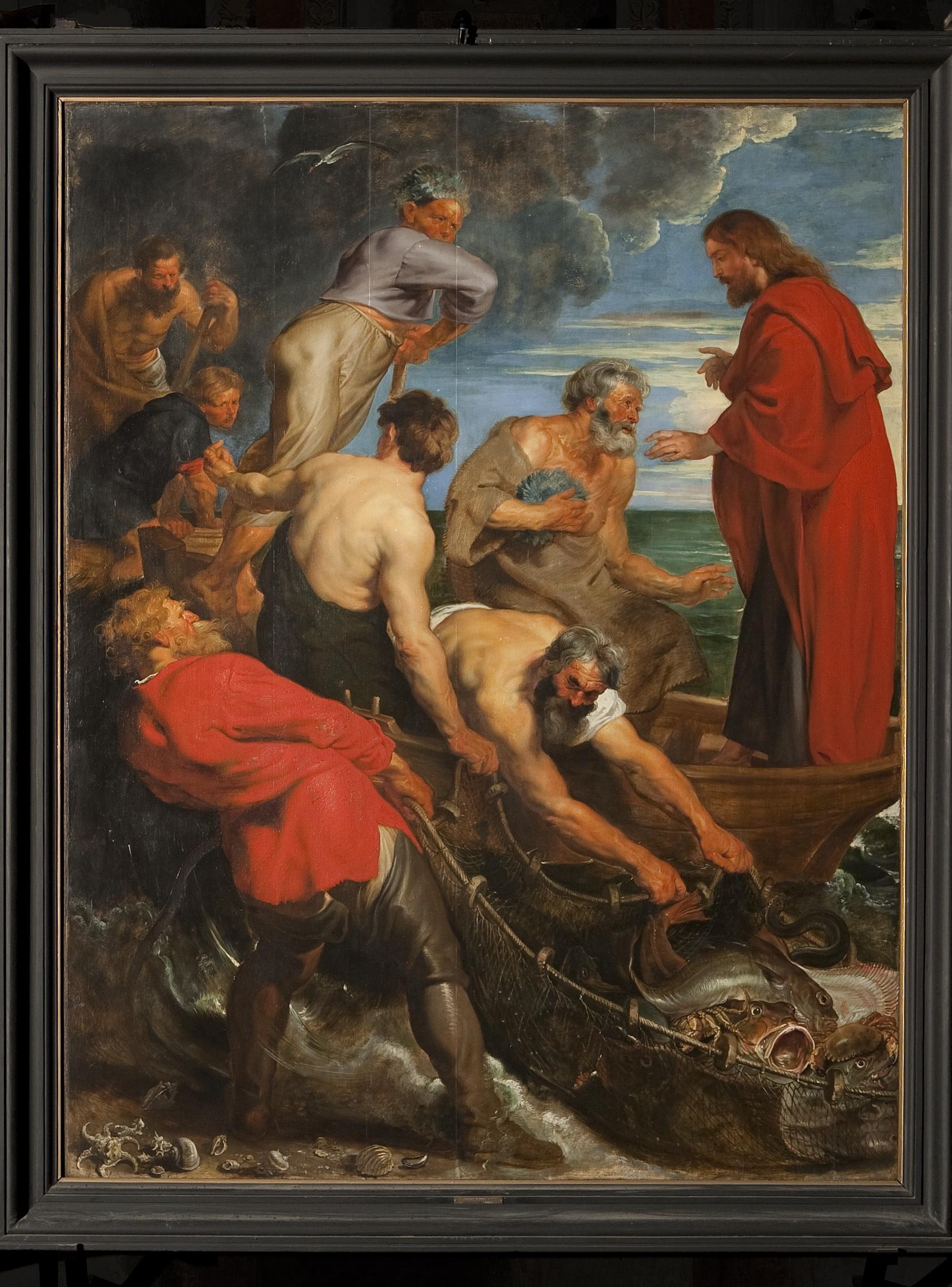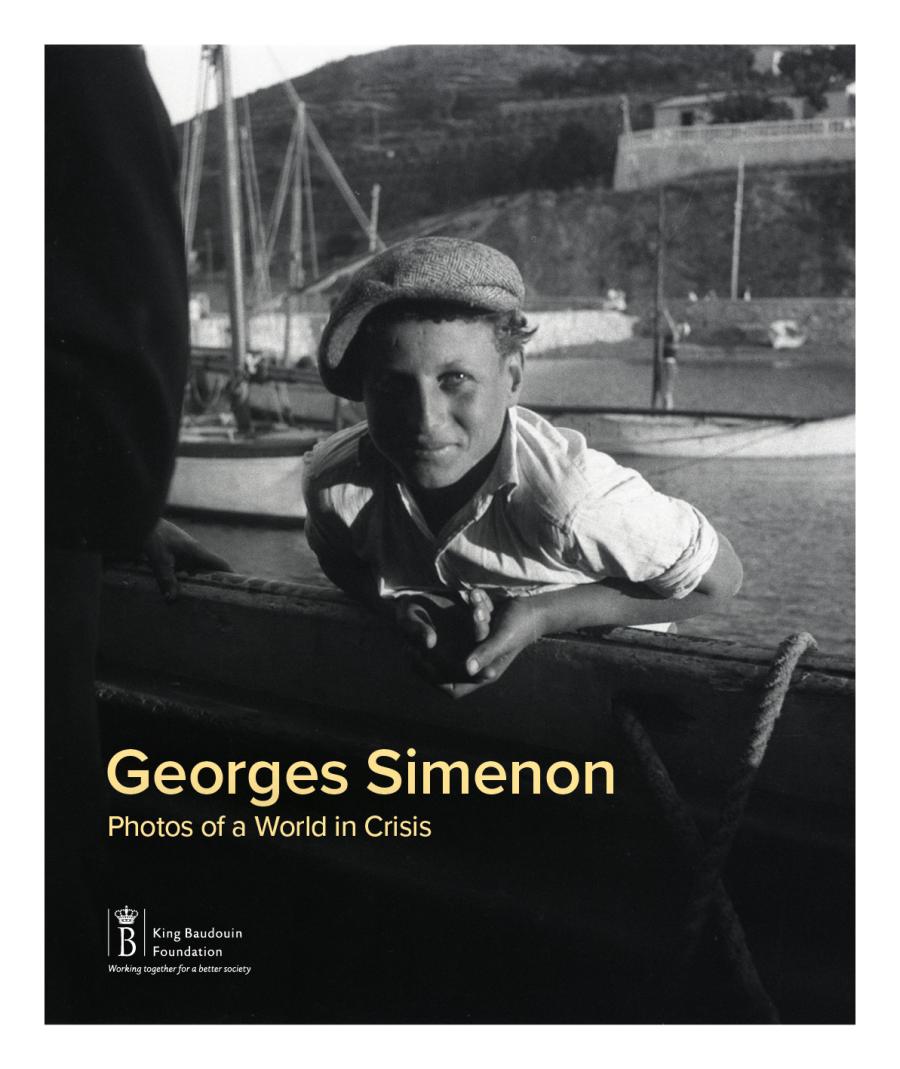
La Pêche miraculeuse regains its original glory
It is something of a miracle that La Pêche miraculeuse still exists at all. So, in order to ensure its future, the council of the church of Onze-Lieve-Vrouw-over-de-Dijlekerk in Mechelen wanted to leave nothing to chance. Thanks to support from the Courtin-Bouché Fund, managed by the King Baudouin Foundation, the tryptic is now undergoing restoration with a view to restoring its original magnificence.
If the French revolutionaries had not made off with La Pêche miraculeuse in 1794 and put it in the Louvre, this unique work by Peter Paul Rubens might not have survived. When it was returned to Mechelen some two decades later, its former place in the transept of the Onze-Lieve-Vrouw-over-de-Dijlekerk church had been taken by another work. The Rubens triptych was therefore relegated to the chapel behind the high altar. A fortunate decision because in 1944, when an American bomb destroyed the gable of the right side of the transept, this work by the Flemish master suffered no damage at all.
From summer later this year, this monumental triptych can once again be admired in this Gothic church, after it has been restored and regained its former brilliance. For the time being, however, the renovation work, which is being co-financed by the Courtin-Bouché Fund, has been halted. Only the spectacle of dust fluttering in the rays of the setting sun is visible through the skylights that have been constructed amidst the wooden fencing. This wooden structure separates this part of the transept from the rest of the church, but visitors to the church can observe progress on the restoration work through narrow openings that have been created.
A powerful guild
"We are waiting for the green light from the Vlaamse Topstukkenraad (the Flemish Council for Artistic Heritage) to begin the last phase of the restoration", explains Wim Hüsken, former conservator of the Mechelen Stedelijk Museum and, as a member of the Religious Heritage working group, manager of the restoration project. Since 2003, La Pêche miraculeuse – or, to give it its official name ‘The Fishmongers’ Altar’ – has been considered as a major work of art by the Flemish government. “It is rare that works of art were commissioned from Rubens for a specific church, but La Pêche miraculeuse is one such piece."
The fact that fishmongers were able to commission Peter Paul Rubens to paint a work for the altar of the Onze-Lieve-Vrouw-over-de-Dijlekerk church says much about their power. “At this time, the Fishmongers’ Guild was one of the most influential in the Archiepiscopal seat of Mechelen”, continues Wim Hüskin. It was in 1614 that the Antwerp master received this commission. Contrary to his usual practice, Rubens had the panels for the painting made by cabinetmakers in Mechelen, prior to having them sent to his studio in Antwerp. Five years later, the painting was sent by boat to Mechelen.
Social duty
Four centuries later, a critical report about the state of this work triggered the process of restoration. “Mould had formed on the side panels", says Eric Stroobants, President of the church council. Happily, the mould was only superficial. Having been installed too close to the wall, a microclimate had been created in the interstitial space and this problem was easily solved by slightly closing the lateral panels. Nevertheless, La Pêche miraculeuse deserved a complete renovation. "The conservation and preservation of this work is our duty. We would have loved to begin the restoration immediately, but unfortunately we did not have the means to do so."
And this is where the Topstukkenraad, which supervised the restoration step by step, came on board, as well as the Courtin-Bouché Fund. As soon as the necessary finance had been achieved, in autumn 2021, work could begin. Restorer Katrien Van den Bosch was responsible for the paint layer. "Analysis of particles of the paint and an X-ray fluorescence spectrometry indicated that it was not necessary to replace the layer of varnish.” Excellent news because then it was ‘only’ necessary to clean the work and get rid of the traces of mould. Katrien is today waiting for approval to carry out the necessary retouching work.
Wood packed with history
One of the elements of the work that still has to be restored is the central panel, which represents the miraculous draught of fishes. In the part where dark clouds loom over the Sea of Galilee, whether looking closely or from a distance, one can clearly see parts where joins in the ‘parquet’ are visible under the paint. The parquet – a system of wooden battens - keeps the panels in place and it is the second big phase of the restoration project.
The parquet system was devised by the conservator of the Louvre Museum, where La Pêche miraculeuse was kept after the French Revolution. "Vertical battens with notches was applied to the panels. The wooden battens were slid into these notches", Wim Hüsken explains. The purpose of this operation was to limit, as much as possible, the natural deformation of the wood used for the panels. "In this way, tension in the wood between the panels could be avoided."
When, however, despite all the efforts made, tension did occur, small vertical fissures appeared in the painting, such as those in the area of the dark clouds. As soon as the Topstukkenraad gives its approval, restorer Martijn Remmen can dismantle the parquet and restore the triptych’s original mobility. "The parquet is something that must absolutely be retained. It forms part of the history of La Pêche miraculeuse", Wim Hüsken stresses.
Relocation
The final retouching will only be completed after the triptych has been returned to the other transept. Rubens created this work to be exhibited in the right hand transept. "He came here in person, in order to see where his work would be hung on the wall. And you can see this in the painting because the light comes from the right", says Wim Hüsken. However, we should say that the church of Onze-Lieve-Vrouw-over-de-Dijlekerk is no longer entirely the original church.
The American bombing of 1944 also destroyed the original stained glass windows. A few fragments of these remain and are exhibited in the entrance hall of the presbytery. During the restoration of the church in the 1960s, modern, geometric bay windows were installed. These have both their proponents and their opponents, but it must be said that they allow much more light to enter the church. "Another effect is that there is much more ultraviolet light, as well as variations in temperature and hygrometry."
The church council therefore asked for, and were granted, authorisation from the Topstukkenraad for La Pêche miraculeuse to be transferred to the other transept. "LED spots will be installed next autumn when the electrical installation of the church is renovated, in order to recreate the same input of light", explains Wim Hüsken. The work will thus be presented as if it were in a museum, so that Peter and Andrew, who are in the background of the lateral panels, can also be admired.
“It is rare that works of art were commissioned from Rubens for a specific church, but La Pêche miraculeuse is one such piece."
"Rubens conceived this work to be viewed from the bottom up." The triptych will therefore be placed on a 1m 20 high plinth. At this distance, it will not be possible for viewers to distinguish the droplet of sweat on Peter’s forehead, as he tries to pull in his nets. This privilege will be reserved uniquely for the restorers! On the other hand, the general public will be able to admire the triptych from this summer, at the end of a most remarkable restoration. "It will be a gift for the town of Mechelen and for everyone who loves art and culture", concludes Eric Stroobants.
More about the Léon and Marcelle Courtin-Bouché Fund
Managed by the King Baudouin Foundation, the mission of the Léon and Marcelle Courtin-Bouché Fund is to preserve moveable cultural heritage of Belgian artists. The Fund contributes, notably, to the acquisition, conservation, restoration and promotion, in the wider sense of the term, of Belgian artists of all periods, except for contemporary artists.
Other stories
Inspiring engagement!

The Goffinet archives shed light on Belgium’s colonial past
Movable heritage
"The intervention of the Heritage Fund enabled archives of huge historical value to be acquired, which today are making a valuable contribution to current issues."
Other calls

Prize Jacqueline Nonkels 2025 - Call for projects for individuals
The annual Jacqueline Nonkels Prize (€ 5.000) is awarded for the preservation and promotion of Belgian surrealist heritage.
Ongoing
Prize Jacqueline Nonkels 2025 - Call for projects for organisations
The annual Jacqueline Nonkels Prize (€ 5.000) is awarded for the preservation and promotion of Belgian surrealist heritage.
Ongoing
Fund René and Karin Jonckheere - Call for projects 2025
Safeguarding movable cultural heritage highlighting the European dimension of Brussels
OngoingOther publications
Other philantrophy
The Bollandist Fund (Fund)
Supports the Bollandist society with the conservation and study of manuscripts and documents relating to hagiography all over the world.
Keramis (Friends of Fund)
Philanthropists support projects of Keramis in La Louvière which promotes activities related to the creation of artistic ceramics in the Wallonia-Brussels Federation.

Jacqueline Delcourt-Nonkels (Fund)
The annual Jacqueline Nonkels Prize supports the preservation and valorization of Belgian surrealist heritage.
Other press releases

The Treasure of Oignies, a magnificent treasure of 13th century gold and silverware, is set to leave Belgium almost entirely for the very first time
From 19 March to 20 October 2024, the Cluny Museum in Paris will present the most beautiful pieces of gold and silverwork that make up the Treasure of Oignies, property of KBF.

From a rare 17th century ‘Madonna with Child’ to masterpieces by Rops and Khnopff and a unique magazine by the Belgian surrealists: the King Baudouin Foundation is exhibiting a varied selection of stunning works at BRAFA
This year, you can once again discover several masterpieces from Belgian heritage at the booth of the KBF, which KBF recently acquired for its public collections.

Expo: ‘ART NOUVEAU. Unique objects with a tale to tell’
The KBF will be exhibiting masterpieces from its Art Nouveau collection at the BELvue Museum in Brussels from 7 June to 7 January 2024, as part of 'Art Nouveau Brussels 2023'.


